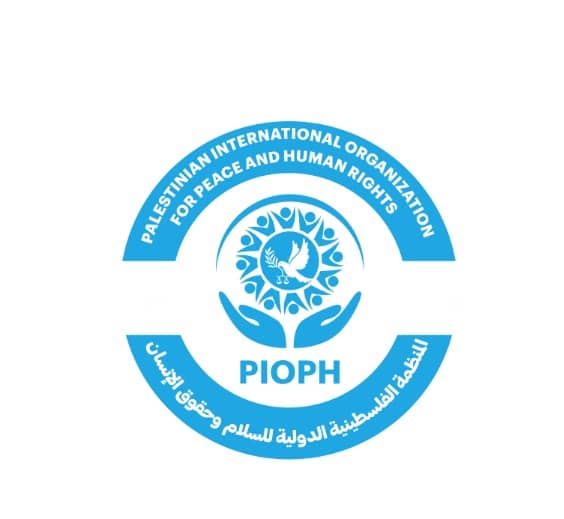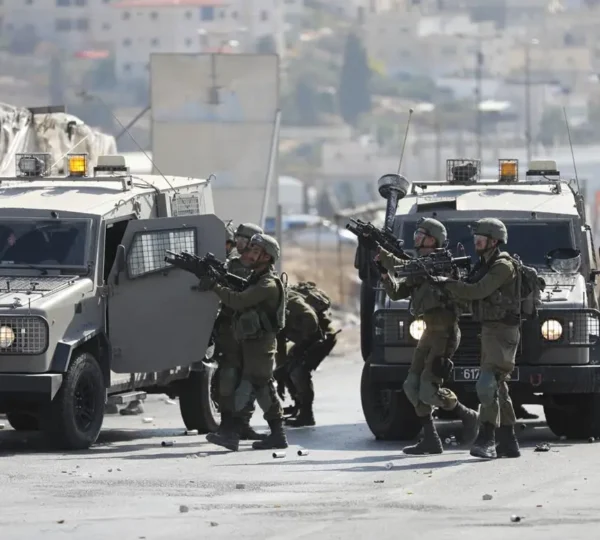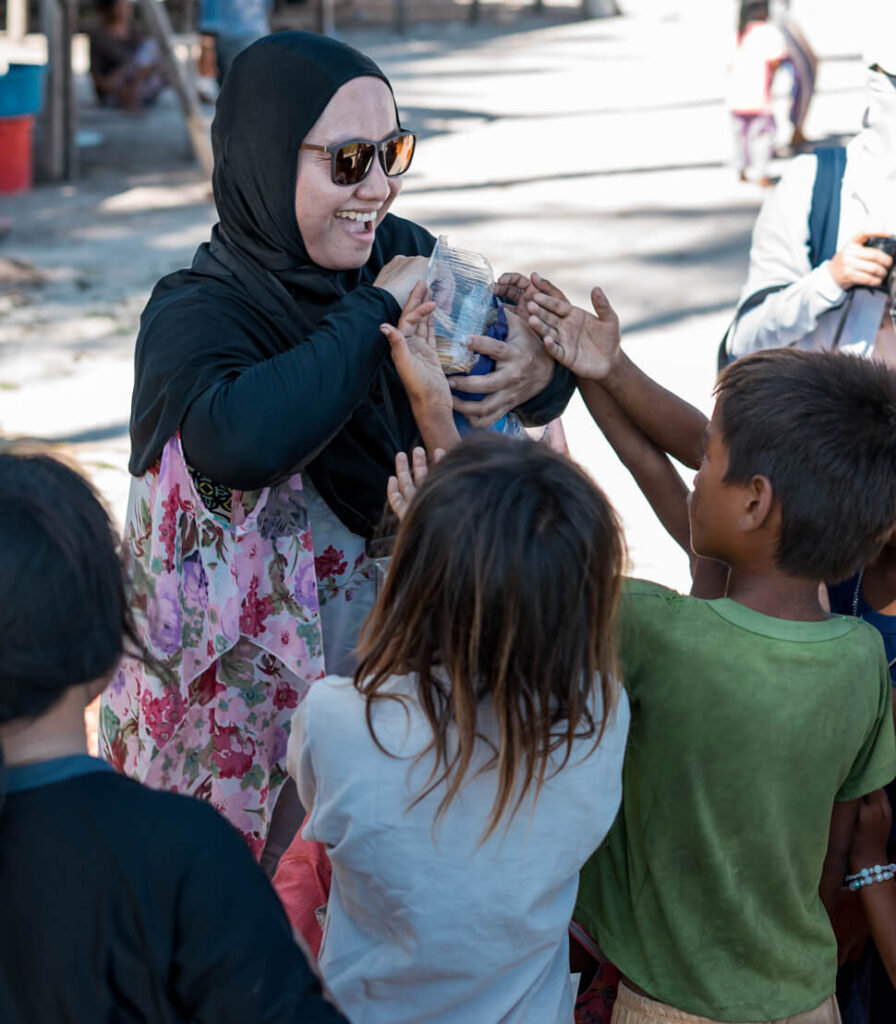Field Report: The Occupation is Suffocating the West Bank with Hundreds of Checkpoints and Iron Gates, Turning It into Isolated Cantons
Military checkpoints are one of the tools of control used by the Israeli occupation forces as part of their settlement-colonial project based on the geographic and demographic fragmentation of the occupied Palestinian territory. In parallel with the settlement expansion operations in the West Bank, including Jerusalem, the construction of bypass roads and the erection of the annexation wall deep inside the occupied Palestinian territory, the occupation forces have intensified, over the course of decades, the establishment of military checkpoints that have transformed cities, villages and camps into isolated cantons that are difficult to move between.
Since the start of the genocidal war on the Gaza Strip on October 7, 2023, the Israeli occupation forces have imposed more restrictions on freedom of movement, by erecting more iron gates and fixed and mobile military checkpoints throughout the West Bank. However, what was also striking was the significant increase in the number of military checkpoints, coinciding with the start of the ceasefire in the Gaza Strip, which indicates that the occupation forces are exploiting the ceasefire to increase their violations and crimes in the West Bank, whether in terms of erecting checkpoints or expanding their storming of cities and camps and launching extensive military operations in them, as is currently happening in the northern West Bank.
According to information available to researchers of the Palestinian International Organization for Peace and Human Rights, since January 19, 2025, the occupation forces have begun increasing the number of checkpoints, placing 17 electronic iron gates, in addition to many checkpoints at the entrances to cities, villages and streets of the West Bank, and tightening restrictions on freedom of movement and travel between those cities and villages, isolating them from each other. The intensification of checkpoints and gates comes within the framework of the occupation’s policy of strangling the West Bank, in order to facilitate Israeli control and hegemony over it in a visible manner, which constitutes part of an attempt to implement the annexation plan, by restricting the Palestinians and undermining the foundations of survival and freedom of movement.
The number of fixed and flying checkpoints, iron gates, earth mounds and cement blocks is 898 Israeli checkpoints throughout the West Bank, including occupied East Jerusalem, according to statistics published by the Wall and Settlement Resistance Commission. These checkpoints and obstacles are distributed as follows:
- Hebron : 229 checkpoints
- Ramallah and Al-Bireh : 156 checkpoints
- Nablus : 147 checkpoints
- Jerusalem : 82 checkpoints
- Bethlehem : 65 checkpoints
- Qalqilya : 53 checkpoints
- Salfit : 50 checkpoints
- Tubas : 33 checkpoints
- Jericho : 32 checkpoints
- Tulkarm : 27 checkpoints
- Jenin : 24 checkpoints
Below is some of what our researchers were able to monitor and document regarding the new restrictions on freedom of movement in the West Bank:
Jerusalem barriers and gates
Since the morning hours of Sunday, January 19, 2025, the Israeli occupation forces have tightened their military measures at all checkpoints and military points in and around the occupied city of East Jerusalem, while repeatedly closing some of them, in addition to closing a number of iron gates erected at the entrances to towns and neighborhoods in the city. This has exacerbated traffic crises and increased the suffering of tens of thousands of citizens from the occupied city, who face great difficulty in going to their work and education centers, which has led to a significant restriction of their movement.
In this context, the Jaba’ military checkpoint has witnessed repeated closures since the aforementioned Sunday morning hours until the preparation of this report, coinciding with the tightening of military measures at the adjacent Qalandia military checkpoint. The occupation forces also installed a new iron gate on the dirt road adjacent to the Jaba’ checkpoint, which exacerbated the already existing traffic crises, which continued from around 5:00 am until the late hours of the night.
Citizen Ahmed Hassan told the organization’s researcher about the suffering of his movement through the Jaba’ checkpoint, as follows:
“I live with my family in the airport neighborhood in the town of Kafr Aqab. I work inside the occupied territories, and my wife works as a teacher in a school in the town of Beit Hanina, which is basically 10 minutes away from the town of Kafr Aqab. My children also study in schools near their mother’s work. We all wake up around 3:30 a.m. and leave the house around 4 a.m. to avoid the traffic jams caused by the closure of the Jaba’ checkpoint around 5:00 a.m. Because of the traffic jams, we spend several hours until we get home, and we often miss lunch. We only spend hours at home sleeping and on official holidays. Traffic jams have become like a prison. Like everyone else, I feel the psychological pressure that has affected my social and even family life.” “I always feel helpless, especially in front of my children, whom I see tired every day from waking up at dawn, especially in the harsh winter weather. Our humanitarian situation is very difficult despite having a blue Israeli ID. We cannot leave our work inside the city of Jerusalem, which is surrounded by checkpoints, due to the deteriorating economic situation. We cannot leave our home that we own and rent a house in the town of Beit Hanina due to the high rents and their scarcity. The scarcity of houses in the city, in light of the policy of demolishing houses and the small number of building permits granted by the occupation municipality, has created a major housing crisis in the occupied city, which has forced many people to live in the town of Kafr Aqab, despite the checkpoints, crises, and deteriorating services there.”
The Al-Zaim checkpoint, Shuafat camp, and Hizma have also witnessed strict military measures since the aforementioned Sunday morning, which caused major traffic jams, greatly restricted the movement of citizens, and affected the lives of citizens living in neighborhoods near these military checkpoints.
It is noteworthy that the number of checkpoints and iron gates in the city of Jerusalem is 82 checkpoints and gates, and on January 19, 2025, the occupation forces added a new gate near the Jaba military checkpoint that separates the towns of Al-Ram and Jaba, and is the main entrance to the governorates of Ramallah and Al-Bireh and Jerusalem.
Bethlehem barriers and gates
Since the morning hours of Sunday, January 19, 2025, the Israeli occupation forces have tightened their military measures at the Nashash military checkpoint, built on lands south of the governorate, and the Container military checkpoint, built northeast of the governorate, and began closing a large number of iron gates erected at the entrances to the governorate’s cities and villages, which led to their partial isolation from each other. The occupation forces also began closing the iron gate erected at the entrance to the Ash Ghurab area east of Beit Sahour city, and set the time to reopen it from 6:00 a.m. until 3:00 p.m., and closed the western entrance to the village of Husan, and set the time to reopen it from 6:00 a.m. until 10:30 a.m. The iron gates at the entrances to the towns of Beit Fajjar, Tuqu, Janata, Al-Khader, and Husan were also closed, in addition to the two gates at the Qabr Hilweh junction and at the Ash Ghurab area east of Beit Sahour, the gate at the entrance to the Al-Khader cemetery known as Al-Banasher Road, and the two iron gates at the entrance to the housing and at Al-Sidr Road north of Beit Jala.
Hassan Breijieh, a researcher in the field of settlements in Bethlehem, told the organization’s researcher the following:
“The occupation forces have installed dozens of iron gates since the beginning of the Israeli war on the Gaza Strip, and the total number of military gates has reached 53 in the Bethlehem area, most of which are completely closed, and the occupation forces do not allow citizens to pass through most of these gates, in addition to the occupation forces closing 36 roads with dirt mounds or cement blocks. The closure of the barriers and gates that the occupation has set up at the entrances to cities and villages has partially isolated them from each other, and restricted the movement of citizens, which has clearly reflected on the economic situation of citizens, as the percentage of families who have fallen below the poverty line in the city has risen to 36%, and one of the reasons for the increase was the difficulty that these families face in moving, which was also confirmed by the Bethlehem Chamber of Commerce and Industry.”
Hebron checkpoints
Since January 19, 2025, the occupation authorities have imposed a complete closure on the Hebron Governorate, where they closed the iron gates installed on the roads leading to the city, with the exception of one road, and set up a military checkpoint on it. They also placed piles of sand barriers on part of those gates, as happened with all the side roads used by citizens, and tightened measures on the residents in the closed area in the city center and abused them.
It is noteworthy that since October 7, 2023, the occupation authorities have begun placing iron gates at all intersections and roads connecting villages and towns in the Hebron Governorate, and closing all dirt and side roads with piles of dirt and rocks. The occupation authorities have cut off communication between the governorate’s parts and imposed a complete policy of punishment on the governorate’s residents. The number of iron gates in the governorate has reached 50.
The occupation authorities imposed collective punishment on the residents, the most severe of which was the closure of the entrance to Al-Fawar refugee camp south of the city, where they isolated about 20,000 citizens and forced them to walk 2 km while being searched and abused. The eastern neighborhoods of the old city of Hebron (Al-Ras and Jaber neighborhood) and part of the neighborhoods in the area classified as H2 are also subject to a complete closure, where the occupation authorities imposed a curfew on them in the first months of the war, and isolated the area from the rest of the city and prevented non-residents from entering or leaving it and abused citizens by establishing detention centers near the “Kiryat Arba” settlement, where many residents were subjected to detention and beatings. The organization documented dozens of testimonies from residents of the camp and the surrounding villages and the closed area in the city of Hebron about the policy of collective punishment against them.
conclusion
The Palestinian International Organization for Peace and Human Rights condemns these arbitrary measures practiced by the Israeli occupation forces, which constitute a flagrant violation of international and humanitarian law, and stresses the need for the international community to intervene to stop these violations and ensure freedom of movement for Palestinians in their lands. The organization also demands justice and accountability for those responsible for these crimes that aim to stifle the daily life of the Palestinian people and impose a new reality on the ground.




